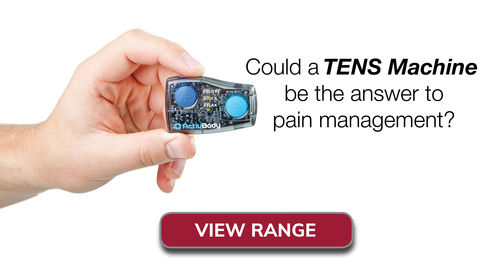PAIN
Living with pain can be a distressing and debilitating thing. Professional recognised studies have defined it as unpleasant and emotional. Often described as a sharp burning sensation, pain is the main reason for someone to seek an appointment with a general practitioner. As people age, we tend to perceive pain differently. In cases of chronic pain, the body’s nervous system becomes more sensitive to distressing feelings. Persons suffering from chronic or acute pain episodes will understand the need for an effective pain management program.
Pain management
Pain management is a sophisticated yet controversial area of health care. The process can involve nonsurgical methods, surgical interventions or both. Predominantly pain is dealt with through the use of analgesic medications of varying potency. Most medications are provided with strict instructions from a physician. The rationale for such stringency is that many of the substances used for controlling pain, such as most analgesics, paracetomol, opiods, and even medicinal cannabis, can have adverse side-effects particularly after prolonged or sustained use.
The effects of ongoing medication
While pain relief medication is by far the most common approach, there are consequences with both short-term heavy doses and long-term use. The body can develop a resistance to some substances. Thus, when drugs are used for a long period, there is less effect. Misuse or overuse of medication is often associated with adverse health effects. The results of recent research has seen new guidelines being endorsed particularly in relation to the damage to kidneys that prolonged or excessive paracetomol ingestion can cause.
While many people turn to pain medication or surgical intervention, studies have found that less invasive treatment options such as hydrotherapy, acupuncture or TENS machines can be just as effective in managing pain.
HYDROTHERAPY
Hydrotherapy is one drug-free alternative. It is a water-based exercise program which involves a range of exercises undertaken in warm water. The exercises are designed by either physiotherapist or exercise physiologist with the aim to decrease pain while enhancing the range of movement and flexibility. The technique also focuses on enhancing muscle strength and improving the general fitness of the individual. Hydrotherapy is considered an effective pain management mechanism which provides alternatives to the land-based exercise programs. Individuals suffering from back pain, hip, knee, shoulder pain and stiffness may benefit from this form of pain therapy. There are drawbacks however, as the high costs associated with using private pools, or the difficulty in accessing economically priced public swimming pools can be restrictive.
To find out about your local hydrotherapy options, visit these links below for further information.
- Wellington Shire (Sale)
- Latrobe Valley (Traralgon)
- Baw Baw Shire (Drouin, Warragul & Yarragon)
ACUPUNCTURE AND MASSAGE THERAPY
Acupuncture entails stimulating certain points on the body – most often with needling – to aid the restoration of balance in the body and encourage healing. Performed by a skilled practitioner, acupuncture can be a safe and effective treatment for a range of disorders including chronic pain.
Other techniques may be used in acupuncture including:
- Remedial Massage
- Chinese Herbs
- Cupping – suction designed to bring blood to the acupuncture point
- Laser – used instead of needling to stimulate points
- Moxibustion – burning herbs held over or applied to acupuncture points
It is important to always ensure acupuncture is only performed by a qualified acupuncturist operating in a facility that is very careful about using sterile needles. In the hands of an unskilled practitioner, acupuncture could cause unexpected side effects such as pain or allergic reactions.
TENS MACHINES
TENS machines are another promising analgesic-free pain management tool. Numerous people use the devices as an alternative to more invasive pain management interventions. TENS stands for Transcutaneous Electrical Nerve Stimulation, and ‘transcutaneous’ means ‘across the skin’. The technique utilises low voltage electrical currents to offset unpleasant sensations. It involves passing a gentle electrical current using an electrode which is attached to the skin in the location where the pain is felt. The charge is sourced from a battery operated machine providing good portability. The machine provides for the adjustment of the intensity and frequency which may either be adjusted to low or high with the electric current. TENS is also used in a similar method to acupuncture in some contexts where electrodes are attached to the skin using the conventional acupuncture points as opposed to the use of needles.
TENS machines have been used for relief in dealing with some types of pain including; knee, back, neck, spinal cord pain; cancer pain; pain during childbirth; rheumatoid arthritis; and osteoarthritis among others.
How effective are TENS machines?
A significant number of users of TENS machines find that it is beneficial in relieving pain. The devices have a two-way affect by promoting the production of endophins, the body’s natural painkillers, and by reducing pain signals that travel in certain parts of the body. TENS machines are also often cited as having a powerful effect on the subjective aspects of pain, known as somatic pain. However, some criticism of the devices are that the relief is limited to the time when the machines are operational.
Where to access TENS Machines
TENS machines are becoming widely accessible as the technology advances. It is crucial to seek professional medical advice in determining the suitability of this type of pain management for individual requirements.
View our range of TENS machines here:


